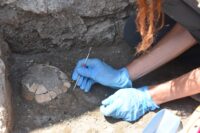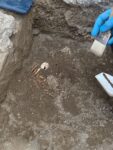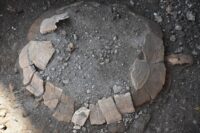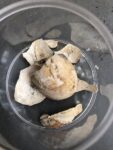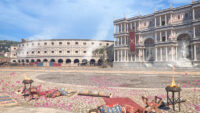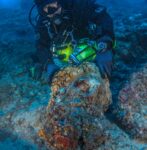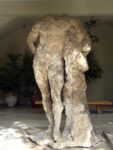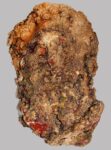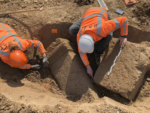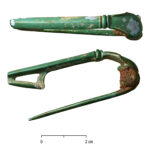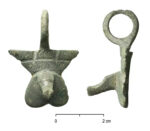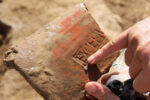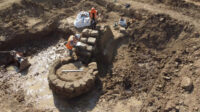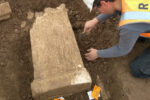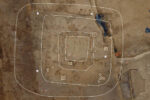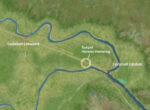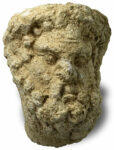The Minneapolis Institute of Art (Mia) is finally getting the opportunity to showcase the collection of Japanese textiles it acquired in 2019 in a new exhibition dedicated to exceptional garments made from locally-sourced natural materials. Dressed by Nature: Textiles of Japan will showcase rare robes, coats, vests, banners and mats made from banana plant fiber, paper, hemp, wisteria, rice straw, elm bark, nettle fiber, paper, fish skin as well as cotton, silk and wool.
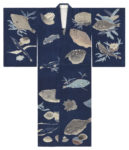
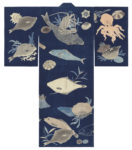 When the museum acquired the 230-piece collection of Japanese masterpieces from Asian textile expert and collector Thomas Murray in 2019, the delicate garments were in need of conservation. They first had to be frozen for a length of time to kill any live bugs that might have settled in to the fabric, then stabilized and stored under climate-controlled conditions. The original plan was to exhibit the freshly conserved collection in the fall of 2020, but for obvious reasons that was delayed.
When the museum acquired the 230-piece collection of Japanese masterpieces from Asian textile expert and collector Thomas Murray in 2019, the delicate garments were in need of conservation. They first had to be frozen for a length of time to kill any live bugs that might have settled in to the fabric, then stabilized and stored under climate-controlled conditions. The original plan was to exhibit the freshly conserved collection in the fall of 2020, but for obvious reasons that was delayed.
“These garments and cloths are unique objects that showcase the creativity of their makers in fashioning textiles from all kinds of natural materials depending on their living circumstances,” [curator Dr. Andreas] Marks said. “While many exhibitions on the dress of Japan focus on the silk kimono and clothes worn by the aristocracy, ‘Dressed by Nature’ instead celebrates the inventiveness and beauty of folk traditions and clothes worn in everyday life. We are excited for visitors to experience the kaleidoscope of materials and designs that will be on view and which demonstrate human ingenuity in the pre-industrial period of Japan between the 18th and early 20th centuries.”
The over 120 textiles on view will highlight the artistry from the diverse cultures that form the Japanese archipelago. These include exceptionally rare, brightly colored resist-dyed bingata robes from Okinawa; delicately patterned garments used by farmers, fishermen, and firemen from Japan’s largest and most populous islands of Honshu and Kyushu; and boldly patterned coats created by Ainu women from Japan’s northern island of Hokkaido and the Sakhalin Island of Siberia.
Among the treasures on display is a dark blue festival robe from the early 1900s decorated with hand-drawn sea creatures painted with a rice paste resist dye technique called tsutsugaki. Worn to celebrate a successful catch, its hand-drawn decoration makes it one of a kind.
Another unique treasure of working class clothing history on display is a complete fireman’s kit from the second half of the 19th century. It contains everything a fireman would have needed to fight the constant fires in the closely-built wooden cities: a coat, a hood, padded gloves, slim-fit pants made of quilted cotton dyed indigo. The firefighters would have saturated this gear in water before combatting the fire.
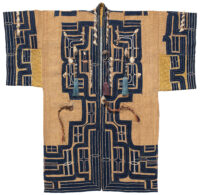 Also acquired from Thomas Murray but earlier this year at Asia Week New York is a rare 18th century Attush (meaning elm bark) robe. The robe was made by the Ainu people of Hokkaido out of elm bark fiber, cotton and trade cloth from the Japanese mainland. It was decorated with appliqué cotton and embroidery, but is the only one of its kind to have embellishments made of sturgeon scales, shells, bird bones and silk tassels, all of which were believed to hold talismanic power. This robe was likely owned by someone of great importance in the community.
Also acquired from Thomas Murray but earlier this year at Asia Week New York is a rare 18th century Attush (meaning elm bark) robe. The robe was made by the Ainu people of Hokkaido out of elm bark fiber, cotton and trade cloth from the Japanese mainland. It was decorated with appliqué cotton and embroidery, but is the only one of its kind to have embellishments made of sturgeon scales, shells, bird bones and silk tassels, all of which were believed to hold talismanic power. This robe was likely owned by someone of great importance in the community.
Dressed by Nature opened June 25th and will run through September 11st.
